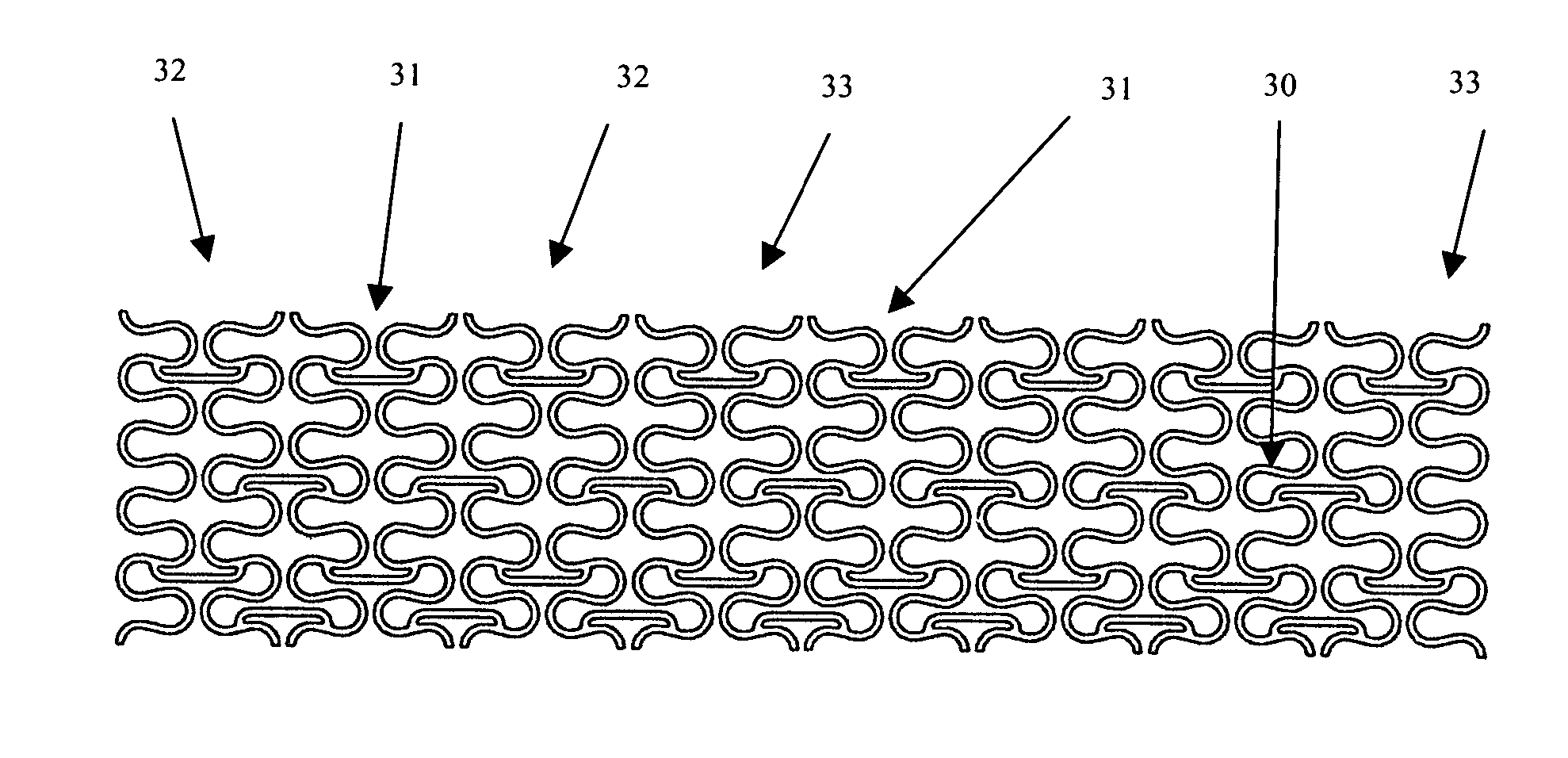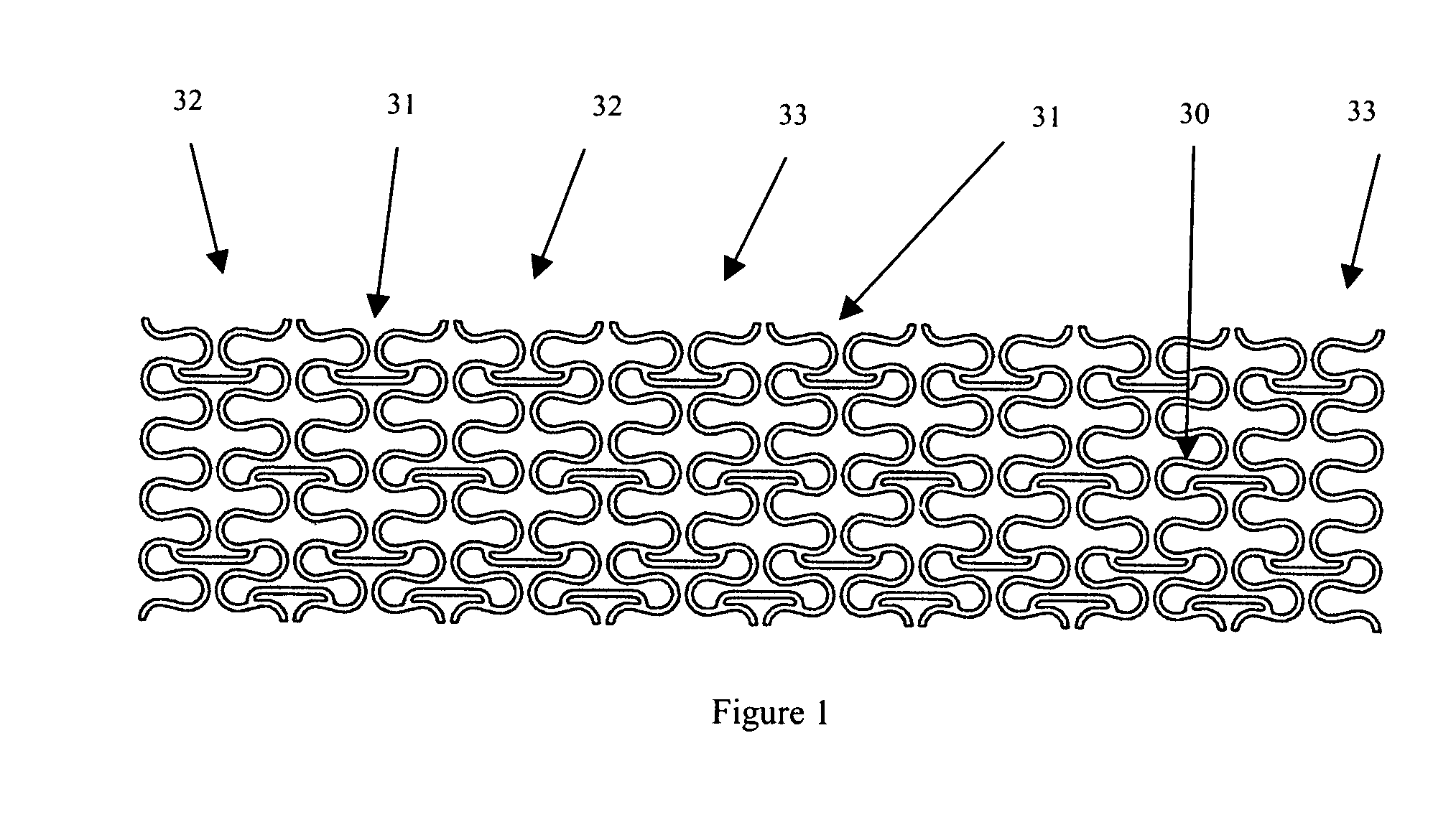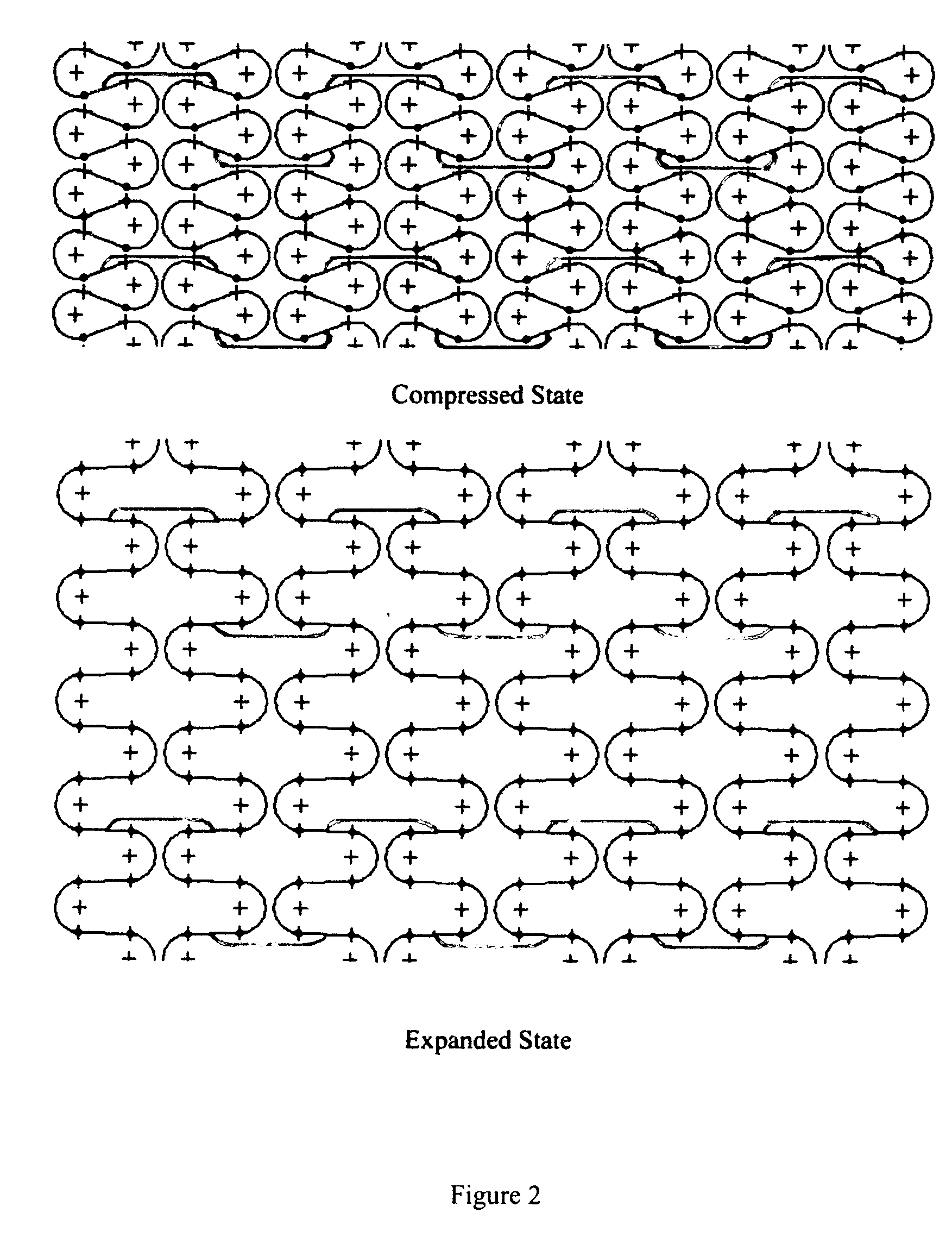Expandable endovascular stent
a stent and endovascular technology, applied in the field of radially expandable endoprosthesis devices, can solve the problems of limiting the compactness of the stent in its compressed state for delivery, and reducing the amount of material needed, so as to reduce the amount of material required, facilitate delivery, and reduce the effect of material requirements
- Summary
- Abstract
- Description
- Claims
- Application Information
AI Technical Summary
Benefits of technology
Problems solved by technology
Method used
Image
Examples
Embodiment Construction
For the purposes of promoting an understanding of the principles of the present invention, reference will now be made to the embodiment illustrated in the drawings and specific language will be used to describe the same. It will nevertheless be understood that no limitation of the scope of the invention is thereby intended, such alterations and further modifications in the illustrated device, and such further applications of the principles of the invention as illustrated herein being contemplated as would normally occur to one skilled in the art to which the invention relates.
Illustrated in FIGS. 1-2 is a flat layout view of a tubular stent incorporating features of the present invention in its compressed and expanded states, respectively. The tubular stent generally comprises a plurality of annular segments 30, as referred to as “struts” hereafter, and a plurality of connecting elements 31, as referred to as “bridges” hereafter. Said struts are assembled in parallel along the le...
PUM
 Login to View More
Login to View More Abstract
Description
Claims
Application Information
 Login to View More
Login to View More - R&D
- Intellectual Property
- Life Sciences
- Materials
- Tech Scout
- Unparalleled Data Quality
- Higher Quality Content
- 60% Fewer Hallucinations
Browse by: Latest US Patents, China's latest patents, Technical Efficacy Thesaurus, Application Domain, Technology Topic, Popular Technical Reports.
© 2025 PatSnap. All rights reserved.Legal|Privacy policy|Modern Slavery Act Transparency Statement|Sitemap|About US| Contact US: help@patsnap.com



